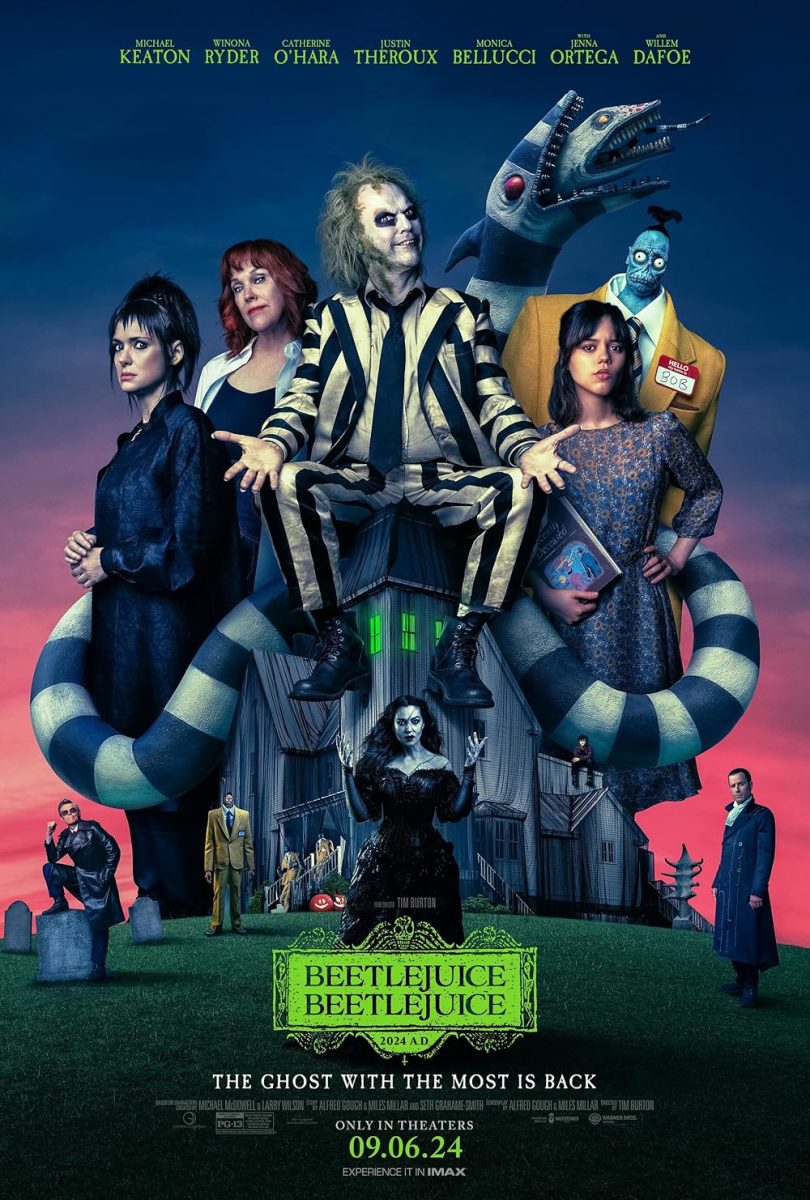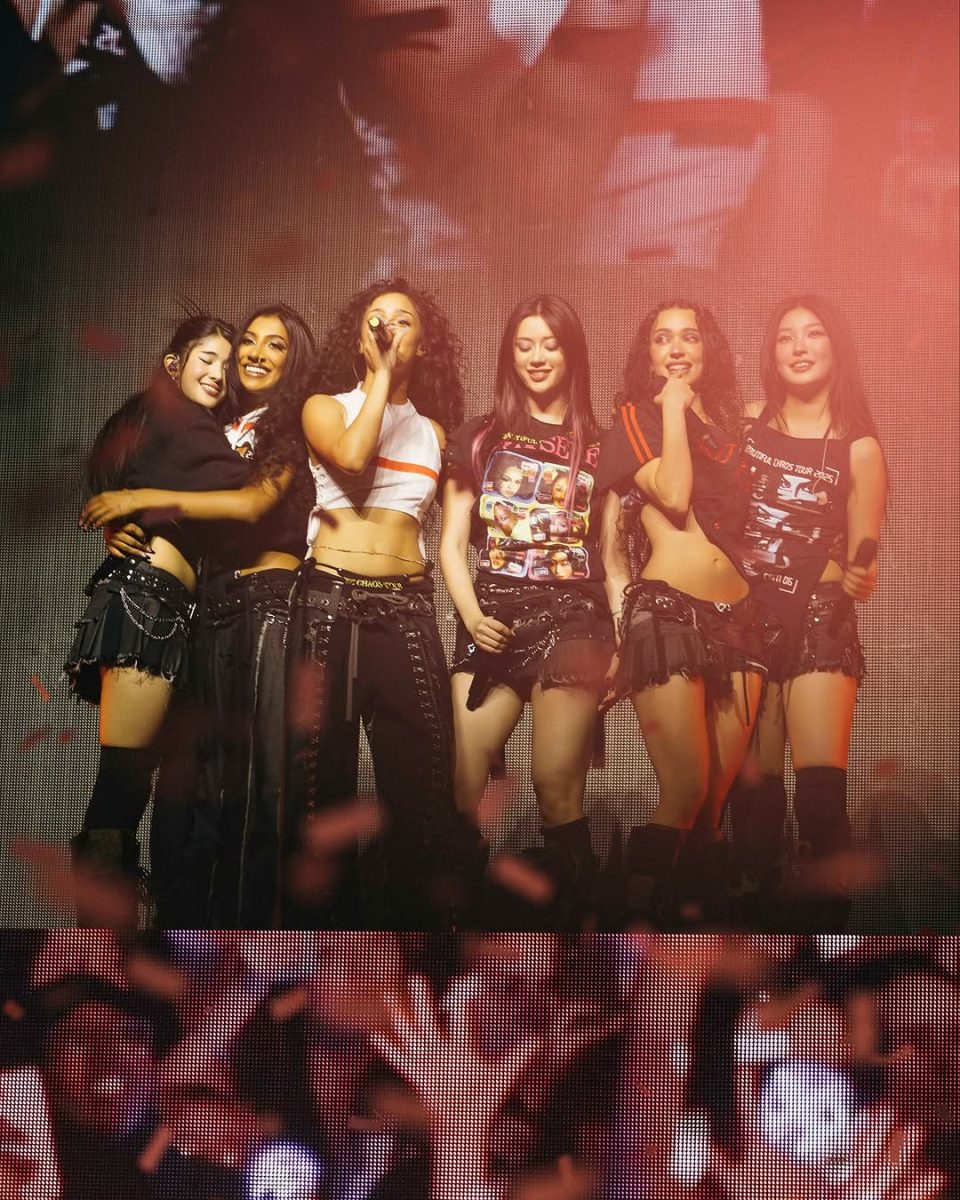Tim Burton resurrects the bizarre world of “Beetlejuice” in his new sequel. The iconic original film has cultivated a deep fandom that continues to flourish, even after 36 years.
Since being announced, “Beetlejuice Beetlejuice” has become one of the most anticipated films of the year, leaving fans wondering whether Burton can recapture the magic of the original, or if it will be another cash grab letdown.
Burton reintroduces his iconic characters, Lydia (played by Winona Ryder) and Delia Deetz (played by Catherine O’Hara), years later. Lydia, host of a paranormal talk show, is reunited with Delia, who has persisted in the art world, after the untimely death of Charles Deetz.
Burton showcases his mastery of filmmaking techniques through the use of claymation and stop motion throughout the film. He also utilizes animation in an effort to showcase the events leading up to Charles’ death, seemingly to avoid having to cast the disgraced actor, Jeffrey Jones, in his sequel.
As the news is delivered between the family, we are introduced to Lydia’s daughter, Astrid (played by Jenna Ortega). Their relationship mirrors a similar estranged dynamic that Lydia and Delia shared in the original film.
The women travel back to Winter River, Connecticut for Charles’ funeral. It isn’t long before Beetlejuice (played by Michael Keaton) reconnects with the mortal realm, in an attempt to escape the afterlife and his vengeful wife, Delores (portrayed by Monica Bellucci).
After Astrid finds herself in trouble within the paranormal realm, Lydia and Beetlejuice work together to save her… under a few conditions.
The movie plays on some nostalgia and pays homage to the original in small ways throughout. Some moments that stand out are the choir rendition of “Day-O” by Harry Belafonte and a gloomier opening sequence, panning across Winter River. That being said, it is not [entirely] dependent on nostalgia, a criticism occasionally expressed about reboots.
“Beetlejuice Beetlejuice” felt like a natural continuation of the story. It doesn’t try to live up to the beloved “Beetlejuice” or appease audiences with constant callbacks. Nor is it the type of sequel that is overly self-aware that it will never live up to the audience’s expectations.
It carries its own identity. It doesn’t carry the same essence of classic Burton. Instead, “Beetlejuice Beetlejuice” feels like an evolved version of that essence. It’s different, but not so much that it is detrimental to the film or the fan experience.
At first, there seemed to be a lot of moving parts between the characters that made me question where the movie was going. But somehow, Burton managed to pull everything together into a cohesive story that had the audience laughing many times throughout the film.
Truth be told, some of the side plots did feel underdeveloped, but they were flushed out enough that it didn’t leave me unsatisfied.
The ending depicted a strange sequence, appearing to be Burton’s way of teasing a third movie, which I suspect will be titled, “Beetlejuice Beetlejuice Beetlejuice.”
I went into the theater expecting to leave disappointed by another mediocre sequel. The truth is, “Beetlejuice Beetlejuice” was a lot of fun.
I walked out of the auditorium pleasantly surprised that the film surpassed my expectations by a long shot despite my prejudice going into it.






